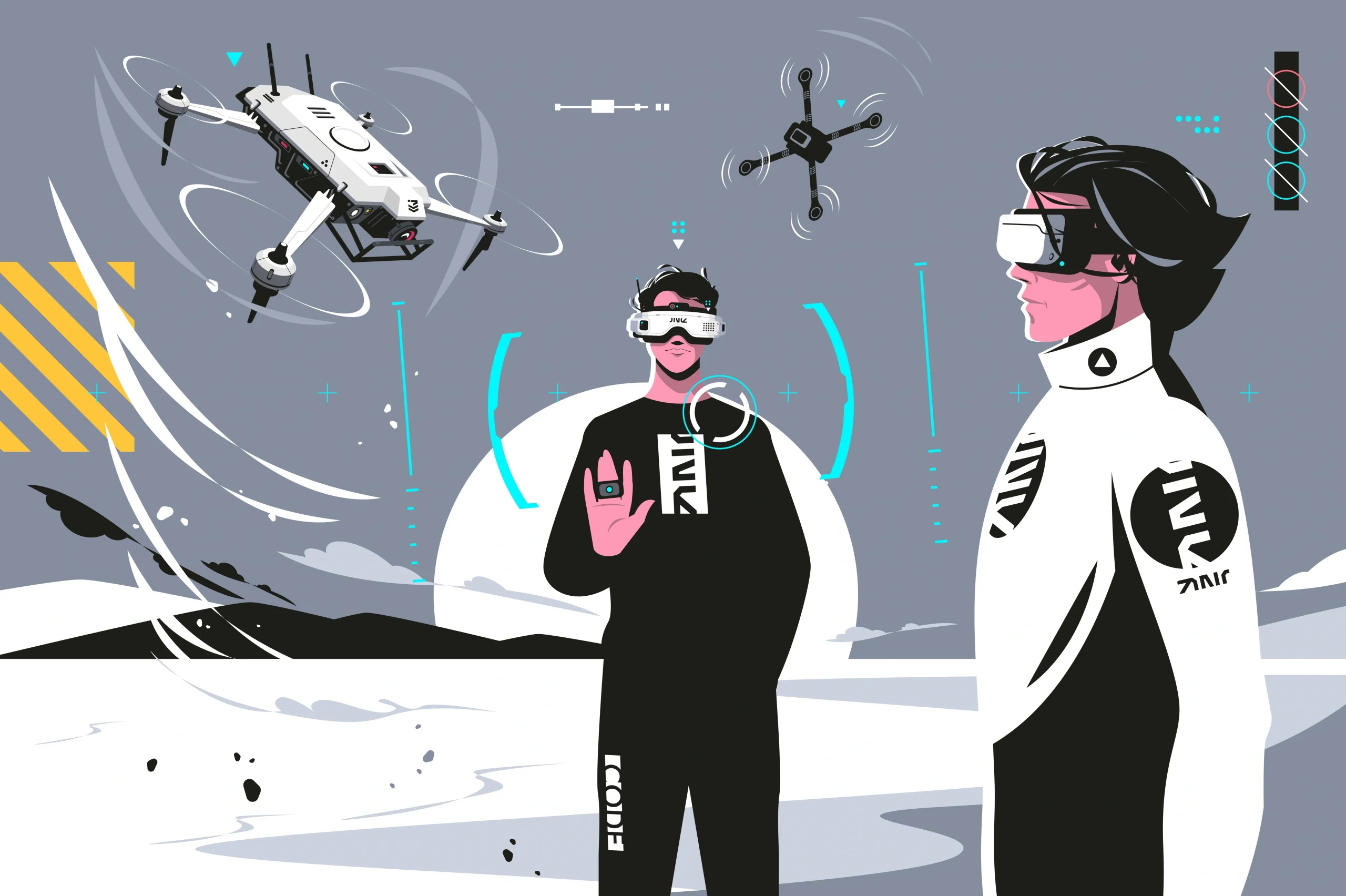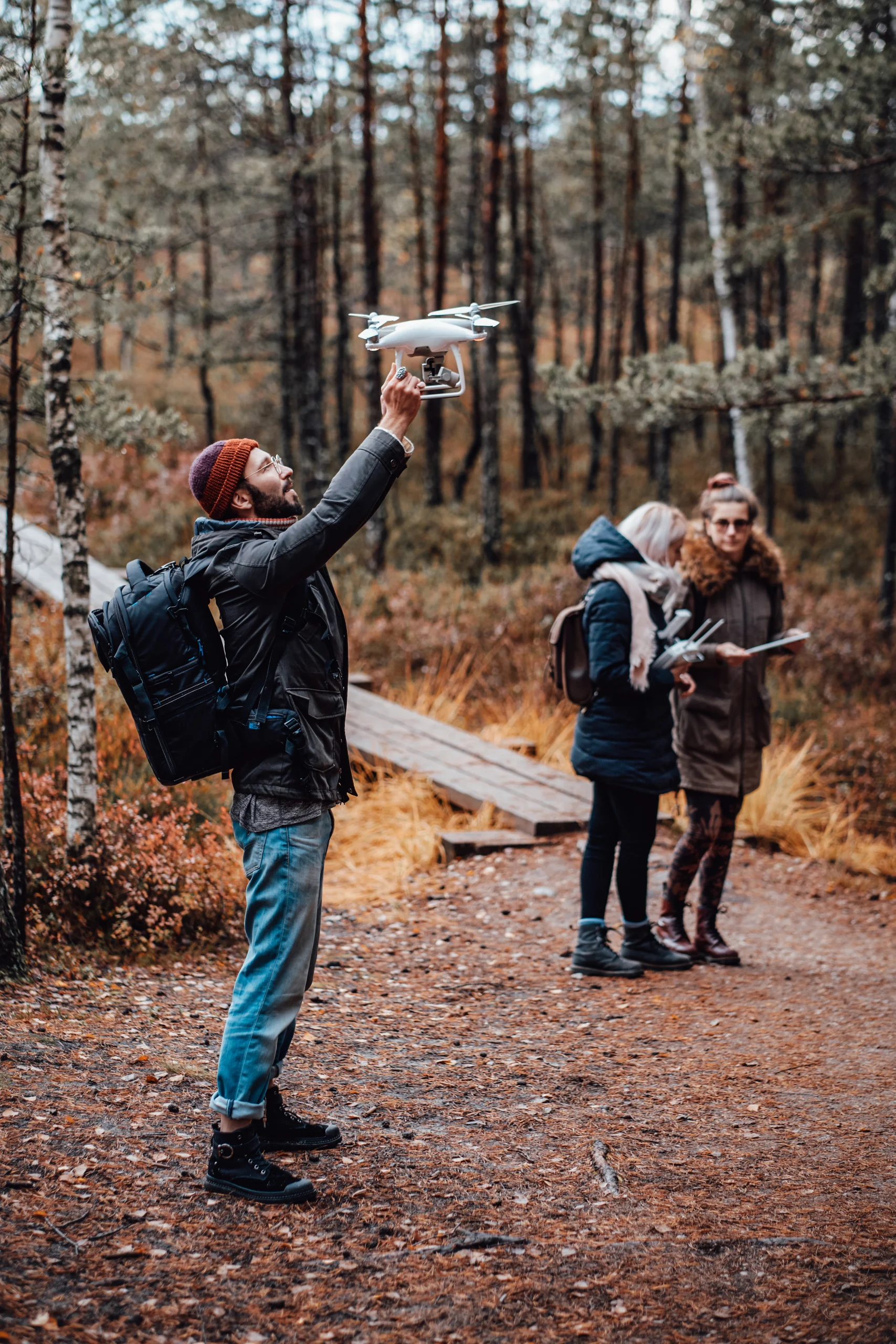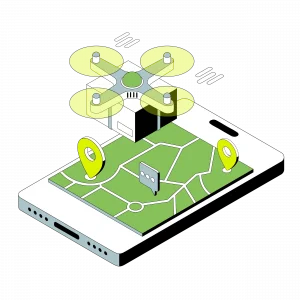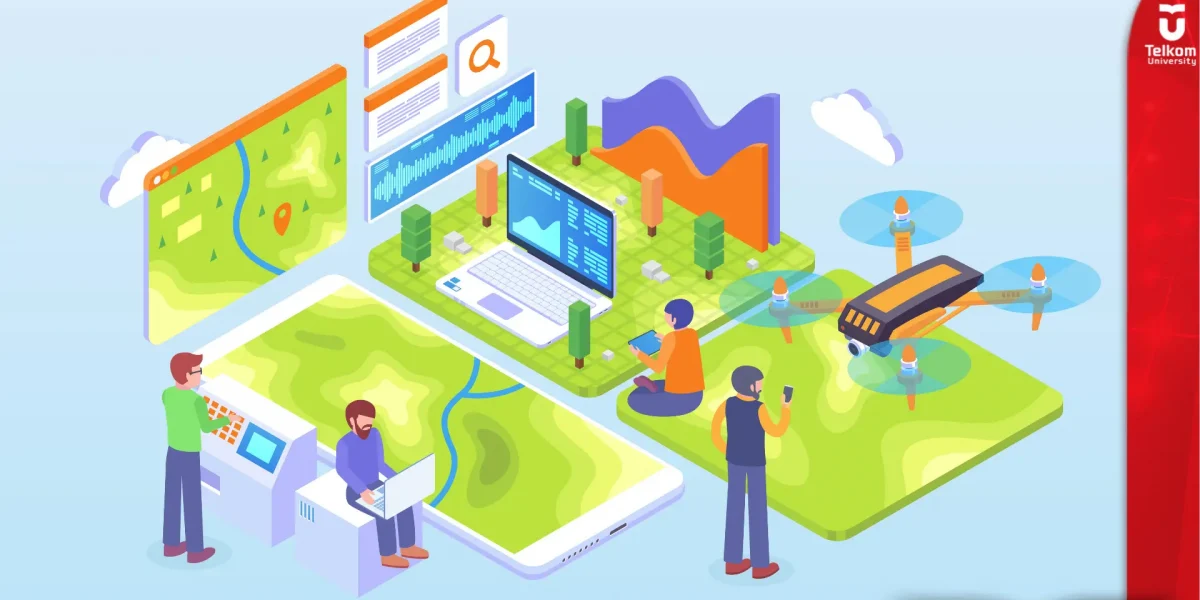LiDAR Sensors on Drones for More Accurate 3D Mapping
LiDAR (Light Detection and Ranging) technology is now a mainstay in 3D mapping, especially in the use of drones for various industrial needs. With its high ability to produce precise topographic maps, this technology has brought many benefits in surveying and geospatial data collection. LiDAR works by emitting laser light from a sensor mounted on a drone, then the laser is reflected back by the ground surface or other objects, providing information about the distance of the object based on the time it takes for the light to return to the sensor. This process produces very detailed and accurate 3D data, so that it can provide a more complete picture of the terrain or area being mapped.

Why Are LiDAR Sensors on Drones Superior in 3D Mapping?
Ability to Work in Various Weather and Light Conditions
LiDAR is not dependent on natural lighting like other optical sensors. It can be used during the day or at night, and it still works effectively in less than ideal weather conditions, such as light rain or fog. This makes it ideal for mapping projects in areas that experience frequent changes in weather or lighting.
Very High Level of Accuracy
One of the biggest advantages of LiDAR is its ability to capture terrain details, even in areas with dense vegetation or trees. This is because the laser beam can penetrate gaps in vegetation and reach the ground directly, producing more accurate data about topography. This technology is especially useful for mapping in forests or hilly areas, where traditional mapping methods often fail.
High Resolution Maps
LiDAR enables the creation of very high-resolution 3D digital models, often with sub-meter accuracy. This is especially useful for projects that require high levels of detail, such as infrastructure development or urban mapping. With this level of detail, the resulting mapping can be used for a variety of in-depth analyses, from construction planning to monitoring land use change.
Fast and Efficient Data Collection Process
Compared to manual or satellite-based mapping methods, the use of drones equipped with LiDAR sensors is much more efficient. With drones, large areas can be mapped in a short time, even those that are difficult to reach by ground surveys. Data collected by LiDAR drones is also processed faster, so mapping and analysis can be done in a matter of hours to days, depending on the size of the mapped area.

LiDAR Drone Applications in Various Industries
The use of LiDAR on drones has grown rapidly in various sectors. Here are some of the main applications of this technology:
- Infrastructure Monitoring and Maintenance
LiDAR drones are often used to monitor and monitor the condition of infrastructure such as bridges, railways and roads. The resulting 3D models allow engineers to detect structural issues, such as cracks or small damage, before they become major problems. These types of inspections also reduce the risk for workers who would otherwise have to perform manual inspections.

- Precision Agriculture
In the agricultural sector, LiDAR is used to map land and crops, helping farmers make decisions about irrigation, planting, and other resource management. With real-time data on soil moisture or crop conditions, farmers can optimize water and fertilizer use, and maximize yields.
- Forest Management and Environmental Conservation
LiDAR is very helpful in mapping forest cover accurately and analyzing forest ecosystems. With this data, foresters can calculate tree volume, monitor forest growth, and identify areas that need reforestation. This technology is also used to monitor environmental changes due to climate change or human intervention.
- Disaster Response and Post-Disaster Recovery
After a natural disaster, such as a flood or earthquake, LiDAR drones can quickly map the affected areas and assist in recovery planning. The accuracy of the resulting data allows emergency response teams to effectively assess infrastructure and environmental damage and plan the steps needed for recovery.
The Future of LiDAR Sensors on Drones
As technology advances, LiDAR sensors are becoming smaller and more affordable. This makes them more accessible to a wide range of industries, including small and medium-sized businesses that may not have previously been able to afford the technology. In the future, drones with LiDAR sensors are expected to become more common in land surveying, smart city mapping, and even for everyday purposes in maintaining environmental security.
With all these advantages, the use of LiDAR sensors on drones is clearly a milestone in the advancement of mapping technology. The combination of speed, accuracy, and adaptability makes this technology a very valuable tool in various mapping projects, both at the commercial and public levels.
For more information about LiDAR technology on drones and its applications, you can explore various existing sources or more in-depth articles related to the development of this technology.

